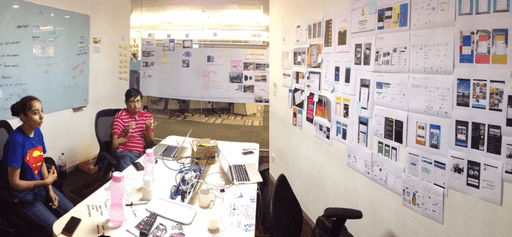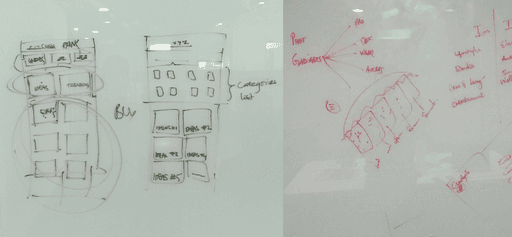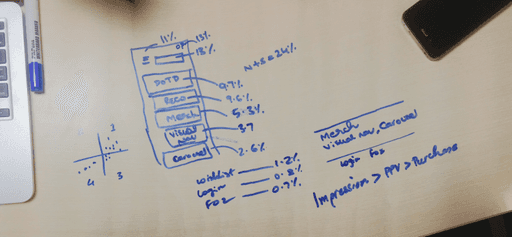BILAL
Flipkart
Building a habit-forming shopping experience

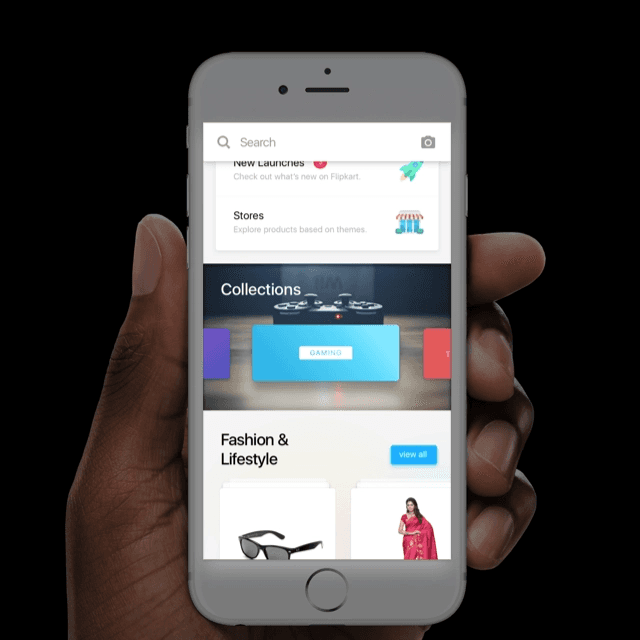
Case study
Retention
Flipkart customers only used the app during big sale events and uninstalled it right after. This is a common problem in India, where many internet users use low-end devices with limited phone storage. In order to retain users, Flipkart needs to make it rewarding to use the app even when there are no active sale campaigns.
UX Designer II
Overview 👀
PROBLEM AT HAND
2015 - 2016
👥 I co-developed and pitched a concept for a habit-forming shopping app with another design partner during Flipkart's 2015 hackathon.
🥇 Our team won the hackathon, which led to the creation of a skunkworks team of four full-stack UX designers.
🧬 This project influenced a change in company culture to make it more design-sensitive.
⚡️ Launched a progressive web app that was designed to work on low and unreliable internet speeds, specifically for users in India's tier-3 towns.
💰 Flipkart's revenue in 2014 was $3.4 bn, with an avg of 10mn DAUs. It grew to more than 15m DAUs with a revenue of $6.6 bn
MY IMPACT
2015 - 2016
UX Designer II
Overview 👀
Customer pain-points 🤒
Retention
“Why should I keep Flipkart app on my phone after the sale is over?”
10mn
>50%
DAUs
First 30 day dropoff
2014
“I don’t have a lot of storage on my phone. I’d rather keep whatsapp, google maps and youtube”
“I buy from anyone that gives me the best price. Whether it is Flipkart, Amazon or Snapdeal”
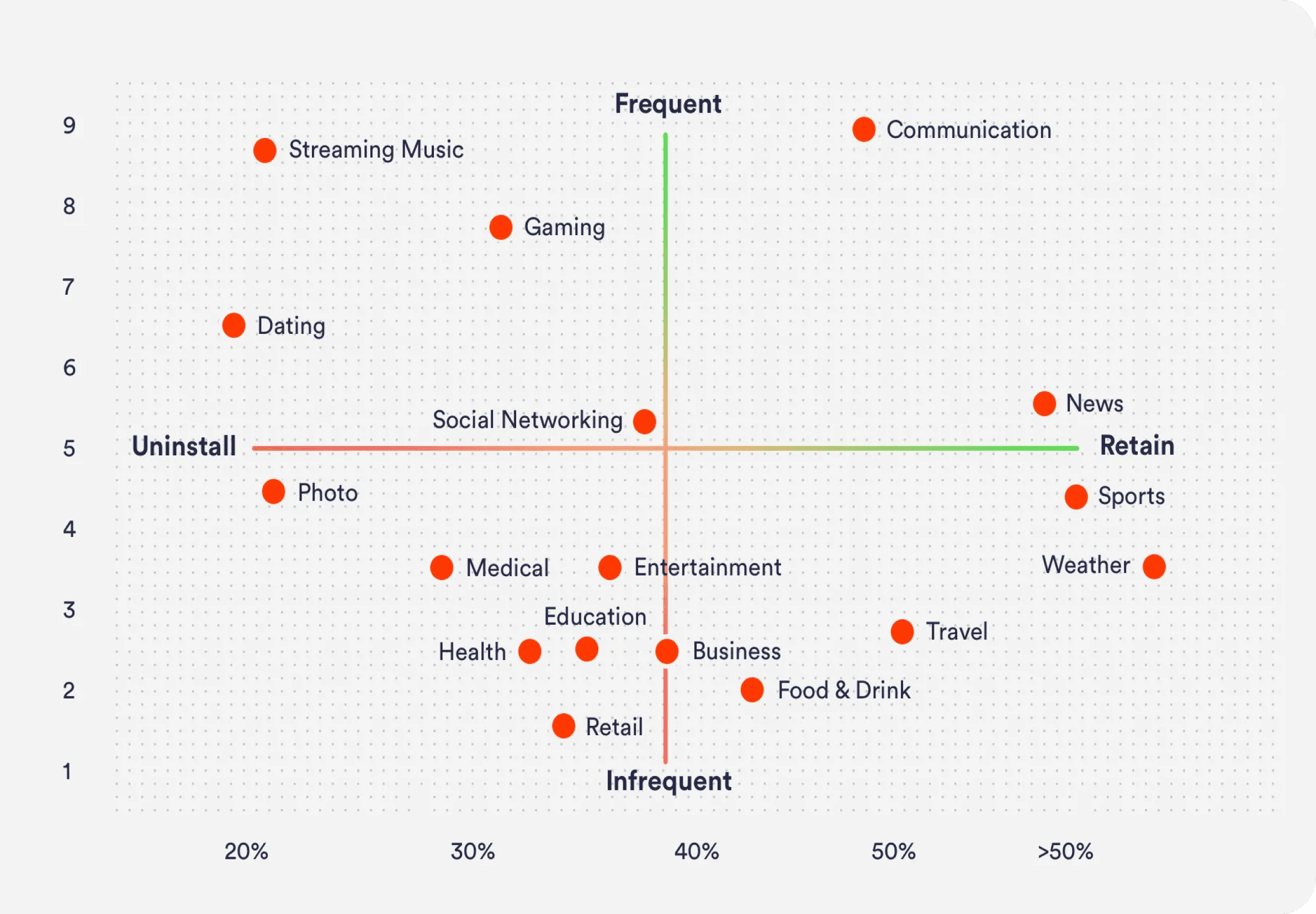
Organisational pain-points 🚨
New product releases without testing
Usage of confusing or misleading language in the marketing materials.
In 2014, 27% of Flipkart's employees left the company, which was higher than the average attrition rate of 13% in the Indian IT industry.
Product decisions for the website or app without considering the impact on users.
Product-development cycle missing the customer feedback-loop.
Hackathon, 2015 👾
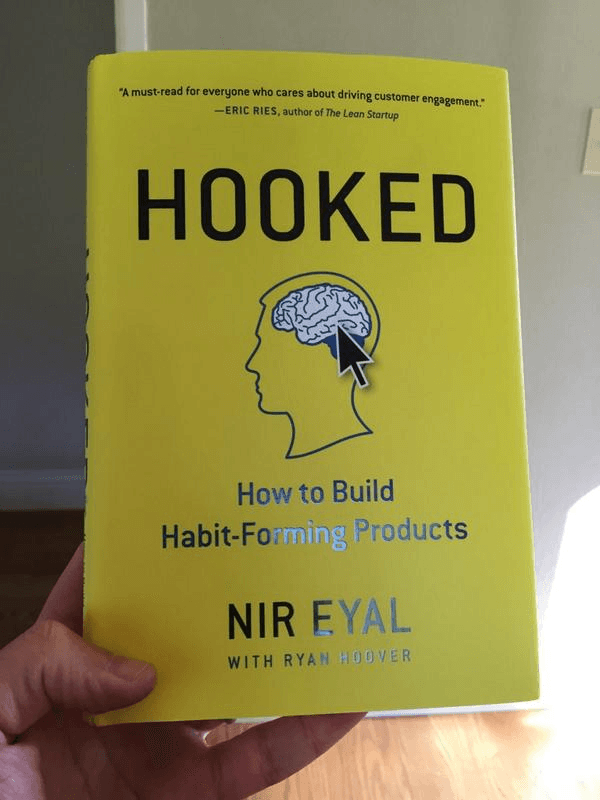
My teammate Rahul and I wanted to create a new, ambitious vision for the Flipkart mobile app from scratch, one that incorporated a habit-forming hook model into the user journey.
Hackathon, 2015 👾
This is what we came up with...
Habits are unconscious actions that make up 40% of our daily lives. The gaming industry uses hooks to keep users engaged.
Hooks are triggered by external and internal cues. External cues are notifications, while internal cues are emotions.
Negative emotions are the most common internal cues. Users browse Instagram or watch funny videos to escape negative moods.
Flipkart could show relevant deals to users in a negative emotional state. Users will anticipate a reward and engage with the product.
We tried to list out various archetypes of external triggers that might draw the Indian consumers’ attention in the context of shopping. To create a medium for external triggers, we had to think of a UI pattern that could enable this.
We observed that the traditional notifications approach might not work very well due to many of it’s inherent issues, which include an increasing notification blindness among consumers.
1. Daily Digest
2. Relevance
3. Network of Things
Daily Digest
Finite vs. Infinite Feed
We thought of building a daily digest of a finite number of products, and refresh the digest once every day. This meant we had to move away from our infinite feed of endless products, which often leaves the user in decision-paralysis.
This meant our recommendation engines had to be re-built from the ground up. Flipkart is a marketplace that has over 30 million products in more than 80 categories. This sheer variety means we need to map these products to users’ interests. This led us to the next challenge: relevance.
Daily Digest
Relevance

Traditional recommendation systems work by crystallizing usage history and finding patterns in it. But for us, this would only partly solve the problem. So we interviewed a few users to understand when do they shop online, and how.
We learned that our users shop in the event of two major themes: Intent & Interest.
Relevance
Network of things
How might we condense millions of products into a digestible feed of a handful products?
At Flipkart, our competitive advantage is our vast and deep inventory of products. We decided we could assign a set of meta-tags to each product, and each tag would be a node in a cloud of thematically related product sets, instead of grouping and dividing by categories.
We grouped the products in various themes and stories. This network can be a combination organic nodes. This means to pushing interesting event-based content to the user. And it grows differently for each user. Here is one of such network we designed for Travel.
Network of things

Network of things
This project lead to the creation of skunkworks at Flipkart in 2016, where designers could freely prototype bold ideas and pitch them to the leadership.

This project lead to the creation of skunkworks at Flipkart in 2016, where designers could freely prototype bold ideas and pitch them to the leadership.
And, Rahul & I became immortal legend heroes in the history books of Flipkart.

Retention
Flipkart customers only used the app during big sale events and uninstalled it right after. This is a common problem in India, where many internet users use low-end devices with limited phone storage. In order to retain users, Flipkart needs to make it rewarding to use the app even when there are no active sale campaigns.
UX Designer II
Overview 👀
PROBLEM AT HAND
2015 - 2016
👥 I co-developed and pitched a concept for a habit-forming shopping app with another design partner during Flipkart's 2015 hackathon.
🥇 Our team won the hackathon, which led to the creation of a skunkworks team of four full-stack UX designers.
🧬 This project influenced a change in company culture to make it more design-sensitive.
⚡️ Launched a progressive web app that was designed to work on low and unreliable internet speeds, specifically for users in India's tier-3 towns.
💰 Flipkart's revenue in 2014 was $3.4 bn, with an avg of 10mn DAUs. It grew to more than 15m DAUs with a revenue of $6.6 bn
MY IMPACT
2015 - 2016
UX Designer II
Overview 👀
Customer pain-points 🤒
Retention
“Why should I keep Flipkart app on my phone after the sale is over?”
10mn
>50%
DAUs
First 30 day dropoff
2014
“I don’t have a lot of storage on my phone. I’d rather keep whatsapp, google maps and youtube”
“I buy from anyone that gives me the best price. Whether it is Flipkart, Amazon or Snapdeal”

Organisational pain-points 🚨
New product releases without testing
Usage of confusing or misleading language in the marketing materials.
In 2014, 27% of Flipkart's employees left the company, which was higher than the average attrition rate of 13% in the Indian IT industry.
Product decisions for the website or app without considering the impact on users.
Product-development cycle missing the customer feedback-loop.
Hackathon, 2015 👾

My teammate Rahul and I wanted to create a new, ambitious vision for the Flipkart mobile app from scratch, one that incorporated a habit-forming hook model into the user journey.
Hackathon, 2015 👾
This is what we came up with...
Habits are unconscious actions that make up 40% of our daily lives. The gaming industry uses hooks to keep users engaged.
Hooks are triggered by external and internal cues. External cues are notifications, while internal cues are emotions.
Negative emotions are the most common internal cues. Users browse Instagram or watch funny videos to escape negative moods.
Flipkart could show relevant deals to users in a negative emotional state. Users will anticipate a reward and engage with the product.
We tried to list out various archetypes of external triggers that might draw the Indian consumers’ attention in the context of shopping. To create a medium for external triggers, we had to think of a UI pattern that could enable this.
We observed that the traditional notifications approach might not work very well due to many of it’s inherent issues, which include an increasing notification blindness among consumers.
1. Daily Digest
2. Relevance
3. Network of Things
Daily Digest
Finite vs. Infinite Feed
We thought of building a daily digest of a finite number of products, and refresh the digest once every day. This meant we had to move away from our infinite feed of endless products, which often leaves the user in decision-paralysis.
This meant our recommendation engines had to be re-built from the ground up. Flipkart is a marketplace that has over 30 million products in more than 80 categories. This sheer variety means we need to map these products to users’ interests. This led us to the next challenge: relevance.
Daily Digest
Relevance

Traditional recommendation systems work by crystallizing usage history and finding patterns in it. But for us, this would only partly solve the problem. So we interviewed a few users to understand when do they shop online, and how.
We learned that our users shop in the event of two major themes: Intent & Interest.
Relevance
Network of things
How might we condense millions of products into a digestible feed of a handful products?
At Flipkart, our competitive advantage is our vast and deep inventory of products. We decided we could assign a set of meta-tags to each product, and each tag would be a node in a cloud of thematically related product sets, instead of grouping and dividing by categories.
We grouped the products in various themes and stories. This network can be a combination organic nodes. This means to pushing interesting event-based content to the user. And it grows differently for each user. Here is one of such network we designed for Travel.
Network of things

Network of things
This project lead to the creation of skunkworks at Flipkart in 2016, where designers could freely prototype bold ideas and pitch them to the leadership.

This project lead to the creation of skunkworks at Flipkart in 2016, where designers could freely prototype bold ideas and pitch them to the leadership.
And, Rahul & I became immortal legend heroes in the history books of Flipkart.

Retention
Flipkart customers only used the app during big sale events and uninstalled it right after. This is a common problem in India, where many internet users use low-end devices with limited phone storage. In order to retain users, Flipkart needs to make it rewarding to use the app even when there are no active sale campaigns.
UX Designer II
Overview 👀
PROBLEM AT HAND
2015 - 2016
👥 I co-developed and pitched a concept for a habit-forming shopping app with another design partner during Flipkart's 2015 hackathon.
🥇 Our team won the hackathon, which led to the creation of a skunkworks team of four full-stack UX designers.
🧬 This project influenced a change in company culture to make it more design-sensitive.
⚡️ Launched a progressive web app that was designed to work on low and unreliable internet speeds, specifically for users in India's tier-3 towns.
💰 Flipkart's revenue in 2014 was $3.4 bn, with an avg of 10mn DAUs. It grew to more than 15m DAUs with a revenue of $6.6 bn
MY IMPACT
2015 - 2016
UX Designer II
Overview 👀
Customer pain-points 🤒
Retention
“Why should I keep Flipkart app on my phone after the sale is over?”
10mn
>50%
DAUs
First 30 day dropoff
2014
“I don’t have a lot of storage on my phone. I’d rather keep whatsapp, google maps and youtube”
“I buy from anyone that gives me the best price. Whether it is Flipkart, Amazon or Snapdeal”

Organisational pain-points 🚨
New product releases without testing
Usage of confusing or misleading language in the marketing materials.
In 2014, 27% of Flipkart's employees left the company, which was higher than the average attrition rate of 13% in the Indian IT industry.
Product decisions for the website or app without considering the impact on users.
Product-development cycle missing the customer feedback-loop.
Hackathon, 2015 👾

My teammate Rahul and I wanted to create a new, ambitious vision for the Flipkart mobile app from scratch, one that incorporated a habit-forming hook model into the user journey.
Hackathon, 2015 👾
This is what we came up with...
Habits are unconscious actions that make up 40% of our daily lives. The gaming industry uses hooks to keep users engaged.
Hooks are triggered by external and internal cues. External cues are notifications, while internal cues are emotions.
Negative emotions are the most common internal cues. Users browse Instagram or watch funny videos to escape negative moods.
Flipkart could show relevant deals to users in a negative emotional state. Users will anticipate a reward and engage with the product.
We tried to list out various archetypes of external triggers that might draw the Indian consumers’ attention in the context of shopping. To create a medium for external triggers, we had to think of a UI pattern that could enable this.
We observed that the traditional notifications approach might not work very well due to many of it’s inherent issues, which include an increasing notification blindness among consumers.
1. Daily Digest
2. Relevance
3. Network of Things
Daily Digest
Finite vs. Infinite Feed
We thought of building a daily digest of a finite number of products, and refresh the digest once every day. This meant we had to move away from our infinite feed of endless products, which often leaves the user in decision-paralysis.
This meant our recommendation engines had to be re-built from the ground up. Flipkart is a marketplace that has over 30 million products in more than 80 categories. This sheer variety means we need to map these products to users’ interests. This led us to the next challenge: relevance.
Daily Digest
Relevance

Traditional recommendation systems work by crystallizing usage history and finding patterns in it. But for us, this would only partly solve the problem. So we interviewed a few users to understand when do they shop online, and how.
We learned that our users shop in the event of two major themes: Intent & Interest.
Relevance
Network of things
How might we condense millions of products into a digestible feed of a handful products?
At Flipkart, our competitive advantage is our vast and deep inventory of products. We decided we could assign a set of meta-tags to each product, and each tag would be a node in a cloud of thematically related product sets, instead of grouping and dividing by categories.
We grouped the products in various themes and stories. This network can be a combination organic nodes. This means to pushing interesting event-based content to the user. And it grows differently for each user. Here is one of such network we designed for Travel.
Network of things

Network of things
This project lead to the creation of skunkworks at Flipkart in 2016, where designers could freely prototype bold ideas and pitch them to the leadership.

This project lead to the creation of skunkworks at Flipkart in 2016, where designers could freely prototype bold ideas and pitch them to the leadership.
And, Rahul & I became immortal legend heroes in the history books of Flipkart.

Retention
Flipkart customers only used the app during big sale events and uninstalled it right after. This is a common problem in India, where many internet users use low-end devices with limited phone storage. In order to retain users, Flipkart needs to make it rewarding to use the app even when there are no active sale campaigns.
UX Designer II
Overview 👀
PROBLEM AT HAND
2015 - 2016
👥 I co-developed and pitched a concept for a habit-forming shopping app with another design partner during Flipkart's 2015 hackathon.
🥇 Our team won the hackathon, which led to the creation of a skunkworks team of four full-stack UX designers.
🧬 This project influenced a change in company culture to make it more design-sensitive.
⚡️ Launched a progressive web app that was designed to work on low and unreliable internet speeds, specifically for users in India's tier-3 towns.
💰 Flipkart's revenue in 2014 was $3.4 bn, with an avg of 10mn DAUs. It grew to more than 15m DAUs with a revenue of $6.6 bn
MY IMPACT
2015 - 2016
UX Designer II
Overview 👀
Customer pain-points 🤒
Retention
“Why should I keep Flipkart app on my phone after the sale is over?”
10mn
>50%
DAUs
First 30 day dropoff
2014
“I don’t have a lot of storage on my phone. I’d rather keep whatsapp, google maps and youtube”
“I buy from anyone that gives me the best price. Whether it is Flipkart, Amazon or Snapdeal”

Organisational pain-points 🚨
New product releases without testing
Usage of confusing or misleading language in the marketing materials.
In 2014, 27% of Flipkart's employees left the company, which was higher than the average attrition rate of 13% in the Indian IT industry.
Product decisions for the website or app without considering the impact on users.
Product-development cycle missing the customer feedback-loop.
Hackathon, 2015 👾

My teammate Rahul and I wanted to create a new, ambitious vision for the Flipkart mobile app from scratch, one that incorporated a habit-forming hook model into the user journey.
Hackathon, 2015 👾
This is what we came up with...
Habits are unconscious actions that make up 40% of our daily lives. The gaming industry uses hooks to keep users engaged.
Hooks are triggered by external and internal cues. External cues are notifications, while internal cues are emotions.
Negative emotions are the most common internal cues. Users browse Instagram or watch funny videos to escape negative moods.
Flipkart could show relevant deals to users in a negative emotional state. Users will anticipate a reward and engage with the product.
We tried to list out various archetypes of external triggers that might draw the Indian consumers’ attention in the context of shopping. To create a medium for external triggers, we had to think of a UI pattern that could enable this.
We observed that the traditional notifications approach might not work very well due to many of it’s inherent issues, which include an increasing notification blindness among consumers.
1. Daily Digest
2. Relevance
3. Network of Things
Daily Digest
Finite vs. Infinite Feed
We thought of building a daily digest of a finite number of products, and refresh the digest once every day. This meant we had to move away from our infinite feed of endless products, which often leaves the user in decision-paralysis.
This meant our recommendation engines had to be re-built from the ground up. Flipkart is a marketplace that has over 30 million products in more than 80 categories. This sheer variety means we need to map these products to users’ interests. This led us to the next challenge: relevance.
Daily Digest
Relevance

Traditional recommendation systems work by crystallizing usage history and finding patterns in it. But for us, this would only partly solve the problem. So we interviewed a few users to understand when do they shop online, and how.
We learned that our users shop in the event of two major themes: Intent & Interest.
Relevance
Network of things
How might we condense millions of products into a digestible feed of a handful products?
At Flipkart, our competitive advantage is our vast and deep inventory of products. We decided we could assign a set of meta-tags to each product, and each tag would be a node in a cloud of thematically related product sets, instead of grouping and dividing by categories.
We grouped the products in various themes and stories. This network can be a combination organic nodes. This means to pushing interesting event-based content to the user. And it grows differently for each user. Here is one of such network we designed for Travel.
Network of things

Network of things
This project lead to the creation of skunkworks at Flipkart in 2016, where designers could freely prototype bold ideas and pitch them to the leadership.

This project lead to the creation of skunkworks at Flipkart in 2016, where designers could freely prototype bold ideas and pitch them to the leadership.
And, Rahul & I became immortal legend heroes in the history books of Flipkart.

